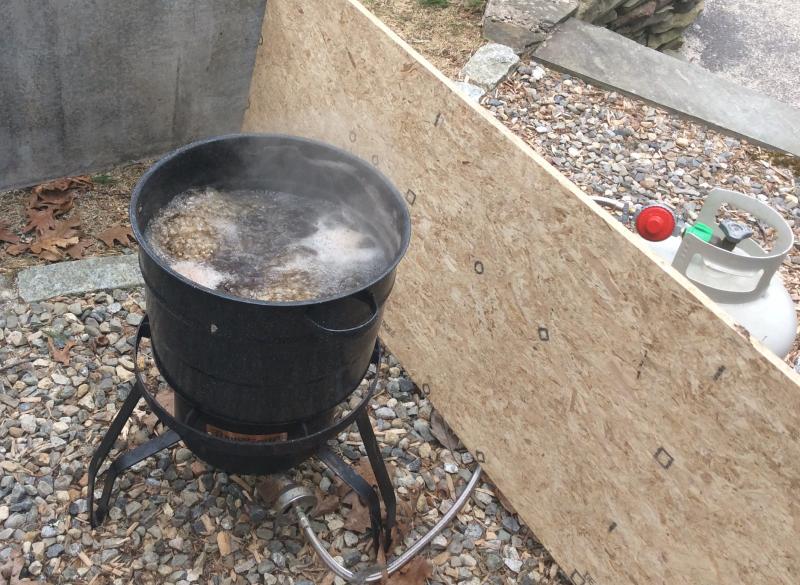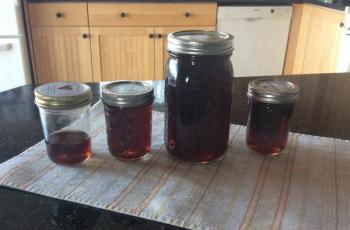Hello friends and neighbors,
Last weekend my husband Dick decided the tree tapping season is over. He set up his super-charged propane lobster cooker outdoors to boil down the sixteen gallons of red maple sap he accumulated into about a quart and a half of maple syrup. Yes, sugar maples have a slightly greater percentage of sugar in the sap, but we don’t have any of those yet whose trunk circumference is more than 12 inches. Nevertheless, the final product tastes just as sweet. For your information, silver and black maples can also be tapped, and some parts of the world even tap birch and walnut trees. However, those trees are rarely used for commercial production.
Dick started tapping trees three years ago as a science experiment. The first year we learned you have to be vigilant while boiling sap. After getting distracted, the liquid burned away and all we were left with was a horribly burned black pot that took three days to get clean! Last year we were more successful, and this year we used a timer to help us remember!
If you have a mature maple tree, you might want to try making syrup next year just for fun. It is helpful to identify the maples in the summer or fall. The easiest way is to find the trees with the helicopter-winged seeds that spiral to the ground when you throw them in the air. Sugar and silver maple leaves have five lobes, while red maples have three lobes. Dick tied a colored plastic ribbon around the trees he decided to tap.
The right time to tap trees is when daytime temperatures are above freezing and nighttime temperatures fall below freezing, generally in February and March. The rising temperature creates pressure in the tree which generates the flow of sap. The sweetest sap flows early in the season, and usually lasts between four and six weeks.
We purchased some taps, hooks, and buckets with removable lids from Ames. We saved up used gallon milk jugs and washed them for sap storage. Dick used a cordless drill with a 7/16” drill bit to make holes in the trees angling slightly downward to facilitate gravity flow. Clean out the wood shavings before hammering in a tap (or spile). Trees with a circumference greater than 20 inches can handle two taps, and greater than 27 inches can handle three taps. Hang the hook on the tap which will hold the bucket and lid. Once the sap started flowing, we emptied the buckets into the gallon jugs using a funnel lined with cheesecloth to catch any unwanted organic material.
As a rule of thumb, at least ten gallons of sap is needed to make a quart of syrup; however, quantities vary due to the sugar content. The boiling operation produces a lot of sweet smelling steam, and is best done outside! We used a large canning cauldron to which we continually added sap as the liquid boiled down. When we had less than a gallon left, we finished boiling in a smaller pot indoors. Now we really had to pay attention! We used a candy thermometer to ascertain when the sap became syrup, which is at 219 degrees. A small amount of sediment/sugar sand should be filtered out (coffee filters work), before filling clean jars with syrup. Depending on the level of sanitation/sterilization you used, the syrup should last many months in your refrigerator. It’s time to enjoy the fruits of your labor! We enjoyed both waffles and pancakes this week!
Contact your newshound pat-dick@midcoast.com or call 231-4049.
































